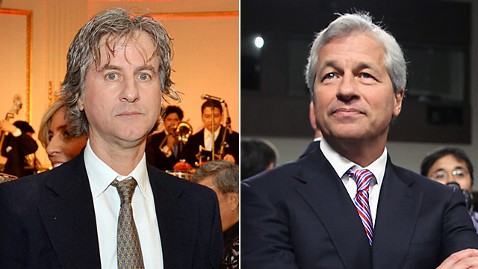Meet Jamie Dimon's Twin Brother: Mind-Body Expert

(Credit: Amanda Gordon/Bloomberg via Getty Images | Mark Wilson/Getty Images)
Theodore Dimon, Jr., Ed.D., the twin brother of Jamie Dimon, CEO of JPMorgan Chase, built his career as an educator exploring the workings of the human body while his brother trekked up the corporate ladder to lead the largest bank in the U.S.
The twin Dimon brothers and older brother, Peter, grew up in Jackson Heights, Queens and Manhattan, raised by Greek American parents, according to Duff McDonald, author of "Last Man Standing," a biography about Jamie Dimon. Though the close-knit family had a history of bankers, Jamie Dimon was the only to pursue a business career.
Ted Dimon, as described on his website, studied at the Constructive Teaching Centre in London and received a Masters and Doctorate in Education from Harvard. He established The Dimon Institute in New York City in 1996.
The Dimon Institute "is dedicated to the scientific and practical exploration of man's unique psychophysical design, and to a holistic and conscious way of living based on an understanding of this design," according to the institute's website.
Dimon has written several books, including "The Body in Motion: Its Evolution and Design," and "Your Body, Your Voice: The Key to Natural Singing and Speaking." He declined to be interviewed.
His institute promotes the Alexander Technique, an educational method that teaches through lessons how to change bad posture habits and improves mobility and alertness, according to the American Society for the Alexander Technique.
Dancers, singers, musicians are described as using the technique to improve breathing, speed, and "accuracy of movement," according to the society. The technique is named for F.M. Alexander (1869-1955), an Australian actor who taught himself about excess tension in his neck and body that contributed to chronic laryngitis, according to AlexanderTechnique.com.
Jill Geiger, information manager at the American Society for the Alexander Technique, said the technique is not physical therapy by any means.
"The Alexander Technique is a century-old educational method that teaches coordination of movement, posture and breathing," she said. "Its effectiveness in relieving back pain for the long term is supported by published research."
Dr. Brent Bauer, director of the complementary and integrative medicine program at the Mayo Clinic, said many of his patients have found benefits from the technique from a host of symptoms, "especially back pain, neck pain and quite a few with headaches." He said the technique is also offered to some degree to the employees at the clinic's wellness center.
According to Bauer, the technique is one of the complementary and alternative medicine (CAM) modalities that isn't quite as well known as some of the "stars," like acupuncture, massage or meditation.
"But I would put it in the class of "not widely known but gaining popularity quickly"," he said, adding that there are "quite a few studies" and positive evidence that point to an effect on back pain.
A review published in the International Journal of Clinical Practice in January found "strong evidence exists for the effectiveness of Alexander Technique lessons for chronic back pain and moderate evidence in Parkinson's-associated disability."
ABC News' Dan Childs and Katie Moisse contributed to this report.